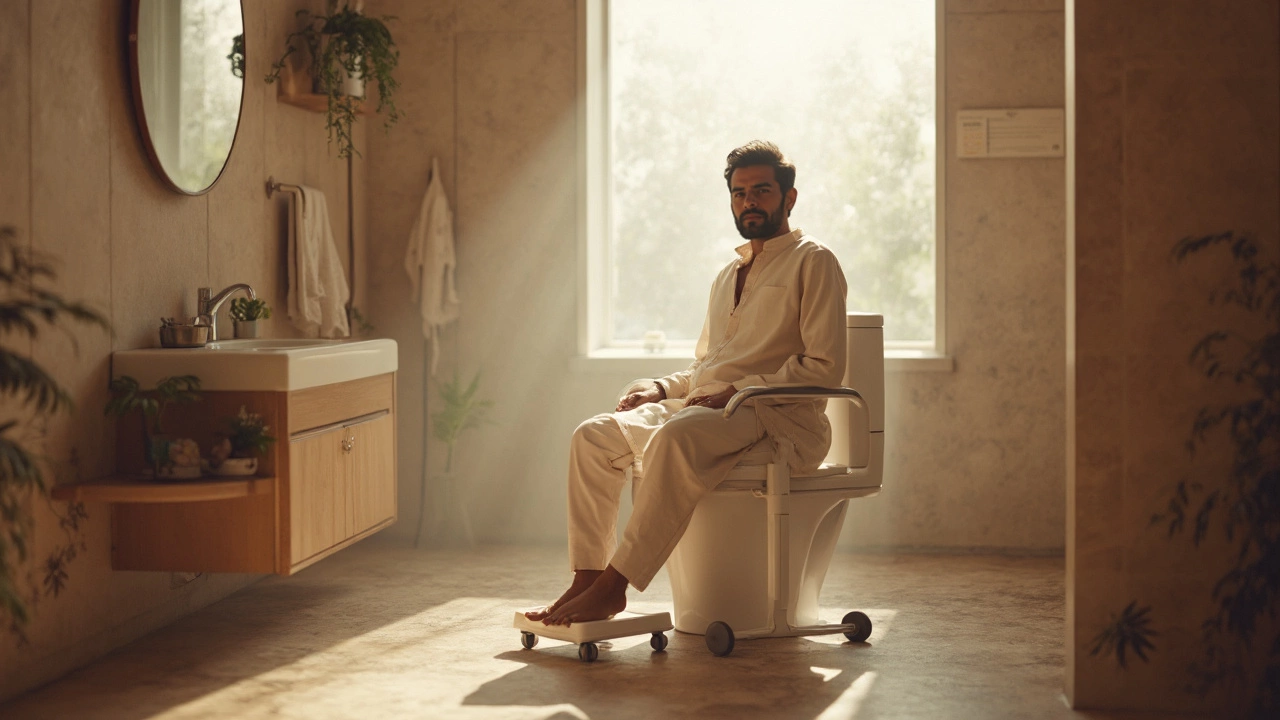Bathroom Tips for Knee Surgery Recovery: Essential Advice for Safe Healing
After knee surgery, a medical procedure to repair or replace a damaged knee joint, often due to arthritis or injury, your bathroom becomes the most dangerous room in your house. It’s slippery, cramped, and full of obstacles—exactly what your healing body can’t afford. Simple changes here can prevent falls, reduce strain, and help you get back on your feet faster. This isn’t about luxury—it’s about survival. If you’ve had a knee replacement or arthroscopy, your balance, strength, and range of motion are all compromised. A wet tile floor or a high toilet seat isn’t just inconvenient—it’s a real risk.
Mobility aids, tools like walkers, canes, or shower chairs that help you move safely after surgery aren’t optional. They’re mandatory. A shower chair lets you sit while washing, so you don’t have to stand on one leg. Grab bars near the toilet and tub give you something solid to hold onto when you’re shifting your weight. Non-slip mats? Not just a suggestion—they’re your first line of defense against a fall that could set your recovery back months. Many people skip these because they think they’re fine, but studies show over 60% of post-surgery falls happen in the bathroom. You don’t need fancy gear. A $20 non-slip sticker, a $40 shower chair, and a few sturdy grab bars from a hardware store can make all the difference.
Toilet height, the distance from the floor to the top of the toilet seat, which affects how easily you can sit down and stand up matters more than you think. Standard toilets are too low for someone with a stiff knee. A raised toilet seat—either a permanent install or a simple clamp-on riser—can cut the effort in half. Same with the shower: if you have to step over a high tub edge, you’re asking for trouble. A walk-in shower or a transfer bench removes that barrier. And don’t forget the little things: keep your slippers by the bed, not the bathroom. Put your medications and clean clothes where you can reach them without bending or twisting. Every movement should be planned, not rushed.
You’re not just recovering from surgery—you’re relearning how to live. The bathroom is where you start that process every single day. These tips aren’t just about comfort. They’re about control. When you reduce the risk of falling, you reduce fear. When you reduce fear, you move more. And movement is the fastest path to healing. The posts below give you real, tested advice from people who’ve been through it: how to choose the right grab bars, what products actually work, how to modify your bathroom on a budget, and what mistakes to avoid at all costs. You’ll find checklists, product ideas, and step-by-step routines that turn your bathroom from a hazard zone into a safe recovery hub.
Navigating Toilet Use After Knee Surgery: Essential Tips
Recovering from knee surgery requires attention to everyday activities, including using the toilet. Safety and comfort can be challenging without proper support and tools. This article delves into the tricks of navigating bathroom visits post-surgery, from helpful aids to maintaining balance. It's all about making this phase of recovery as smooth and comfortable as possible.
read more
